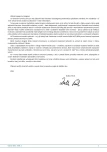Development of surgical retrieval a men's sperm with azoospemia
Authors:
V. Sobotka; J. Heráček
Published in:
Urol List 2012; 10(4): 15-18
Overview
The article si about development of surgical sampling a men's sperm with azoospemia after the introduction of ICSI method at the end of seventies. This method of direct injection of sperm into ovarias enables fertilization of one egg with one sperm. With IVF man can have their own children, regardless if they have a serious disorders of spermatogenesis and azoospemia. These man, had been previously excluded from the possibility of reproduction and fertilization, was only possible with sperm of donor. ICSI is therefore regarded as one of key milestones in assisted reproduction. For urologists, that opened the possibility of teamwork with gynekology. Method microTESE is the most efective in sampling sperm and most gentle to the tissues and vasculaziations. During microTESE procedure late complitations are minimilized. Individual techniques are described in the article including pros and cons of individual undertakings. At the end of article the autor is sharing his experience in sampling a men´s sperm for last 18 years.
Key words:
ICSI - nonobstructive azoospermia - methods of surgical retrieval of sperm - TESE
Sources
1. Lanzendorf SE, Maloney MK, Veeck LL et al. A preclinical evaluation of pronuclear formation by microinjection of human spermatozoa into huma oocytes. Fertil Steril 1988; 49(5): 835–842.
2. Palermo G, Joris H, Devroey P et al. Pregnancies after intracytoplasmic injection of a single sperrmatozoon into an oocyte. Lancet 1992; 230(8810): 17–18.
3. Palermo G, Joris H, Derde MP et al. Sperm characteristics and autosome of human assisted fertilization by subzonal insemination and intracytoplasmic sperm injection. Fertil Steril 1993; 59(4): 826–835.
4. Van Steirteghem AC, Liu J, Nagy Z et al. Use of assisted fertilization. Hum Reprod 1993; 8(11): 1784.
5. Van Steirteghem AC, Liu J, Joris H et al. Higher success rate by intracytoplasmatic sperm injection than by subzonal insemination. Report of a second series of 300 consecutive treatment cycles. Hum Reprod 1993; 8(7): 1055–1060.
6. Van Steirteghem AC, Nagy Z, Joris Het al. High fertilization and implantation rates after intracytoplasmatic sperm injection. Hum Reprod 1993; 8(7): 1061–1066.
7. Friedler S, Razier A, Strassburger D et al. Testicular sperm retrieval by percutaneaus fine needle sperm aspiration compared with testicular sperm extraction by open biopsy in men with non-obstructive azoospermia. Hum Reprod 1997; 12(7): 1488–1493.
8. Schlegel PN. Physiological consequenses of testicular sperm extraction. Hum Reprod 1996; 11(Abstr book 1): 74.
9. Schlegel PN. Testicular sperm extraction: microdissection improves sperm yield with minimal tissue excission. Hum Reprod 1999; 14(1): 131–135.
10. Tournaye H, Verheyen G, Nagy P et al. Are there any predictive factors for succeful surgical sperm recovery in azoospermic patients? Hum Reprod 1997; 12(1): 80–86.
11. Schlegel PN. Nonobstructive azoospermia: A Revolutionary Surgical Approach and Results. Semin Reprod Med 2009; 27(2): 165–170.
12. Verlinsky I, Kuliev A. Preimplantation Diagnosis of Genetic Diseases: a New Technique in Assisted Reproduction. New York: Wiley-Liss 1993.
13. Brindsen PR. Textbook of in vitro Fertilization and Assisted Reproduction. Third Edition 2007: 45–52.
Labels
Paediatric urologist UrologyArticle was published in
Urological Journal

2012 Issue 4
Most read in this issue
- Adverse events of hormone replacement testosterone therapy
- Testicular adenomatoid tumor – diagnosis and operating procedures
- Vaporizace prostaty pomocí zeleného laseru (GreenLight laser) – zkušenost z jednoho centra po provedení více než 1 000 výkonů
- Development of surgical retrieval a men's sperm with azoospemia
